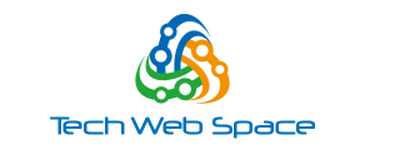
Understanding Software Development Methodologies
In the world of software development, choosing the correct methodology can make or break your project. With various approaches available, identifying the one best suited to your project’s needs is crucial. This decision impacts project delivery, quality, and team collaboration.
Software development methodologies provide a structured framework for planning, executing, and managing software projects. They vary significantly in their processes, flexibility, and overall objectives. Before jumping into specifics, it’s essential to understand the fundamental purpose of these methodologies. They serve to streamline development, reduce risks, and improve quality.
The choice of methodology often depends on the project scale, team size, and the level of client involvement. Some projects may require flexibility, while others demand a rigid structure. This post will delve into several popular methodologies to help business owners make informed decisions.
Agile: Embracing Change
Agile methodology is designed to accommodate changing requirements, making it perfect for projects where flexibility is essential. It promotes frequent inspection and adaptation, ensuring that teams can respond to client feedback quickly. Agile is not just about the work process; it’s a culture that values collaboration and communication.
In Agile, projects are broken into small, manageable units called iterations or sprints. Each sprint typically lasts two to four weeks, during which teams focus on delivering functional features. This approach allows for regular assessment, enabling teams to identify what works and what needs adjusting.
Benefits of Agile
1. Flexibility and Adaptability:Agile allows teams to pivot easily in response to client feedback and changing market conditions.
2. Enhanced Collaboration:Agile promotes constant communication among team members and stakeholders, ensuring everyone is aligned.
3. Frequent Delivery of Features:Regular releases lead to quicker returns on investment and provide opportunities for early feedback.
However, Agile isn’t for everyone. It requires a committed team and a willingness to embrace change at every step.
Waterfall: A Traditional Approach
The Waterfall methodology is the classic linear approach to software development. In this model, the project progresses through clearly defined phases: requirements, design, implementation, testing, deployment, and maintenance. Each phase must be completed before moving to the next, creating a structured environment.
Waterfall is best suited for projects with well-defined requirements that are unlikely to change over time. This model is common in industries where regulatory standards are stringent, such as healthcare and finance. The predictability and thorough documentation associated with Waterfall provide a sense of security for many project managers.
Pros and Cons of Waterfall
Pros:
• Clear and understandable structure.
• Easy to measure progress, as each phase is distinct.
• Extensive documentation builds a comprehensive project history.
Cons:
• Inflexibility to changes once a phase is completed.
• Late testing phase may lead to discovering significant issues at the end of the project.
• Can leave stakeholders disengaged during extended phases.
DevOps: Integration of Development and Operations
DevOps is more than just a software development methodology; it embodies a cultural shift that emphasizes collaboration between software developers (Dev) and IT operations (Ops). The objective is to shorten the systems development lifecycle while delivering high-quality software continuously.
By integrating development and operations teams, DevOps fosters a culture of shared responsibility. This approach leads to increased efficiency in deploying software, ensuring that projects reach stakeholders faster without sacrificing quality.
Key Features of DevOps
1. Continuous Integration/Continuous Deployment (CI/CD):This practice allows teams to automatically build, test, and deploy code to production, ensuring smoother project rollouts.
2. Collaboration Tools:DevOps uses various tools and platforms such as Jenkins, Docker, and Git, ensuring all team members have real-time access to information and can communicate effectively.
3. Automation:Routine tasks like testing and deployment can be automated, saving time and reducing human error.
Scrum: A Framework Within Agile
Scrum is a subset of Agile methodology that provides a specific framework for team collaboration. It focuses on delivering high-quality products in a collaborative setting while maintaining flexibility. In Scrum, teams work in cycles known as sprints, which usually last two to four weeks.
Scrum emphasizes roles such as the Product Owner, Scrum Master, and the Development Team. Each role is designed to ensure clear responsibilities and accountability, enhancing effectiveness. This structure encourages iterative progress through constant feedback and collaboration.
Benefits of Scrum
1. Clear Roles and Responsibilities:With defined roles, team members understand their expectations and accountability, driving efficiency.
2. Frequent Releases:Scrum allows for regular delivery of product increments, enabling quick adjustments based on feedback.
3. Enhanced Team Collaboration:Daily stand-ups and retrospectives foster a culture of communication and teamwork.
Lean Software Development: Elimination of Waste
Lean software development is inspired by lean manufacturing principles, focusing on optimizing efficiency and minimizing waste. The core idea is to create maximum value for customers with the least amount of resources used. Lean encourages teams to assess their workflows regularly, identifying areas for improvement.
Central to Lean methodology are its principles, which include eliminating waste, building quality in, creating knowledge, and delaying commitment until the last responsible moment. These principles guide teams in developing high-quality software while reducing unnecessary steps in the process.
Lean Principles Explained
1. Eliminate Waste:Focus on activities that add value; remove anything that does not serve customer needs.
2. Empower the Team:Encourage team members to take ownership of their work and make decisions quickly.
3. Continuous Improvement:Regularly iterate processes and integrate feedback to enhance product quality.
Choosing the Right Methodology
Determining the most suitable software development methodology requires careful consideration of various factors. No single methodology fits every project. Business owners must evaluate their project’s unique characteristics, including timeline, budget, and specific requirements.
To choose the right methodology, consider the following steps:
1. Assess Project Requirements: Clearly define what you need. Are the requirements stable, or do they evolve frequently?
2. Evaluate Team Dynamics: What is the team’s experience with specific methodologies? Are they comfortable with Agile or Lean, for instance?
3. Consider Client Involvement: How engaged will the client be throughout the process? Involvement is critical in methodologies like Agile.
4. Analyze Project Complexity: For simpler projects, Waterfall may suffice, while complex projects might benefit from Agile or DevOps.
Final Thoughts on Software Development Methodologies
Selecting the right software development methodology is pivotal in enhancing the success of your project. Each methodology has its strengths and weaknesses. The Agile methodology champions flexibility, while the Waterfall approach ensures structure. DevOps integrates operations for speed, and Lean focuses on waste reduction.
As a business owner, you have to analyze your project’s needs, your team’s strengths, and your client’s involvement to make a well-informed decision. Don’t rush. Each project is unique, and the wrong methodology can hinder progress and inflate costs.
In the end, the right choice can drive project success, enhance collaboration, and yield high-quality products that meet client expectations. If you’re considering a project and need expert guidance, consulting a software development company in france could provide valuable insights into the best practices tailored for your specific needs.
FAQs About Software Development Methodologies
Agile is considered the most flexible methodology, as it allows for changes in project scope and requirements during development. Its iterative process promotes quick adaptation to client feedback.
Waterfall is ideal for projects with well-defined requirements and minimal expected change. If your project has strict deadlines or regulatory complexities, Waterfall can provide the structured approach necessary for compliance.
Yes, hybrid approaches combining different methodologies can be effective. For instance, you might use Agile for development while adhering to Waterfall for documentation. Tailoring your approach to suit your project’s needs can yield better results.

